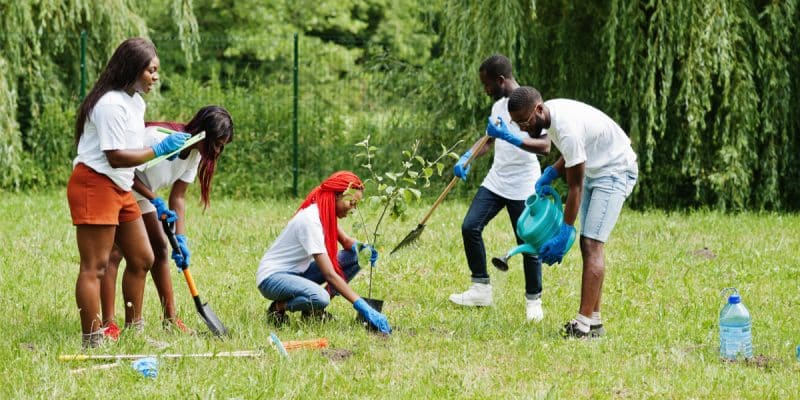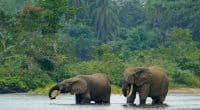The Patte d'Oie forest and the square in front of the Chaminade high school in Brazzaville were the focus of an operation to plant 1,150 rubber trees on Sunday, 3 September 2022. The activity, called "Operation Reforestation", is part of the Lions Club International's environmental initiative.
A hundred members of the Lions Club International, a charitable organisation, proceeded on 3 September 2022 to the planting of 1150 trees in Brazzaville, the capital of the Republic of Congo. The seedlings were planted on two sites, namely the Patte d’Oie forest (150 seedlings) and the square in front of the Chaminade high school (1,000 seedlings).
The activity, called “Operation Reforestation”, is part of the environmental policy of the Lions Club International. “It is in our interest to reforest in order to allow future generations to have access not only to trees, but also to the benefits of plants,” explains Dr. Sylvie Ekouya-Itoua, President of Lions Club Region 25. She adds that this tree-planting operation was held simultaneously in several other African countries. Cities located in Cameroon, Gabon, Guinea, Central African Republic (CAR), Angola, Chad and Burkina Faso where 300 trees, mainly margosa and moringa, were planted in Djiguemtenga located in the Centre region.
The problem with monoculture forestry
The Lions Club International does not specify the choice of rubber trees for its operation in Brazzaville, Congo. However, it should be noted that forest monocultures are vulnerable. The best documented risk associated with monocultures is a health risk related to the spread of pests and pathogens. It is important to realise that most insect herbivores are more or less specialists, in the sense that they are only able to feed and reproduce on a limited number of more or less related tree species.
Read also-MADAGASCAR: Sogea-Satom launches a reforestation operation in Antolojanahary
These are called host trees. A host tree is recognised as a food resource by herbivorous insects that have adaptations to bypass the tree’s defences. Yet in a mixed forest, the repulsive signals emitted by non-host trees prevent insects from locating and orienting themselves towards their host trees. According to Bastien Castagneyrol, a researcher in ecology at the National Institute of Agronomic Research (INRAE) in France, in more than 600 studies, insect herbivores cause on average 20% more damage in monocultures than on the same tree species growing in mixed forests.
Boris Ngounou







